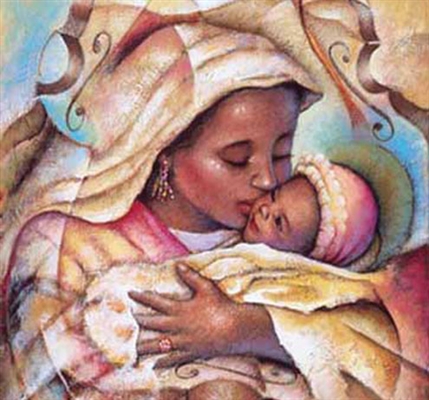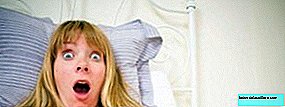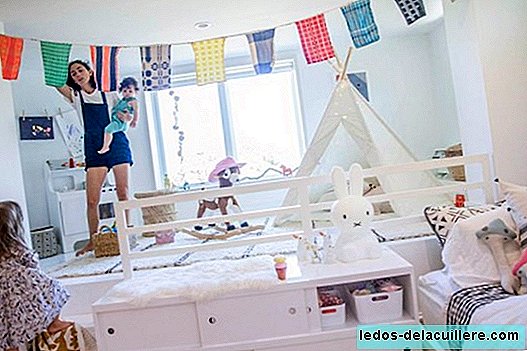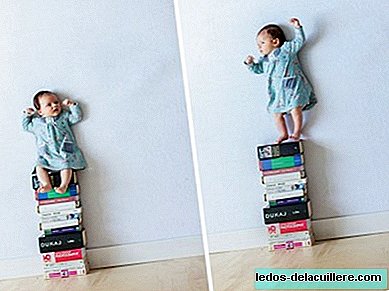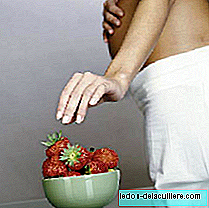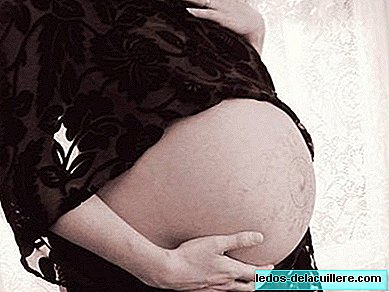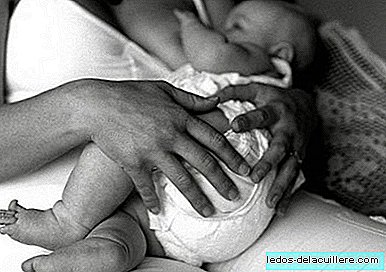
The World Health Organization (WHO) recommends that babies be fed exclusively to the breast during the first six months of life. As he explains, "babies who are fed in this way have more opportunities to achieve optimal growth, development and health."
But you can't always or want to breastfeed. And all mothers deserve the same respect, even if they decide not to breastfeed the baby, because The important thing is to feed and take good care of the baby.
In case of not breastfeeding WHO ensures that "Babies need an appropriate substitute for breast milk, a preparation for infants". If it's your choice, you're interested in knowing How to prepare your baby's bottle with formula milk safely, so that it is healthy.
Hygiene advice
WHO ensures that powdered preparations for infants are not sterile: they may contain harmful bacteria capable of causing serious diseases in infants. Proper preparation and preservation of these milks reduce the risk of the baby getting a disease.
That is why he points out that the utensils used to feed the babies and to prepare the shots (bottles, teats, lids, spoons) have to be thoroughly cleaned before using them.
The cleaning and sterilization of the material eliminate harmful bacteria that could proliferate in the taking and make the baby sick.
According to WHO, it is done in three steps:
1. Cleaning
Wash your hands with soap and water and dry them with a clean cloth.
Thoroughly wash all the utensils you are going to use to prepare and give the bottle in hot soapy water. Use a special clean brush (brush) for bottles and another for teats, to rub the inside and outside, making sure to remove all the remains of hard-to-reach places.
Rinse well with clean water.
The American Pediatric Association adds that it is also important to carefully wash and rinse and dry the top of the formula milk container before opening it and mixing spoons.
2. Sterilization
At this point there is some controversy, since while childcare brands continue to recommend sterilizing bottles and teats in cold or heat, different studies have long shown that bacterial contamination was similar between washings and sterilized ones and that the incidence of gastroenteritis it did not vary (4-8), as explained by the Spanish Association of Pediatrics in a report prepared on the subject.
The AAP also advises boil the bottle and nipple once at the time of purchase and then it is enough to wash them with detergent.
If you prefer to sterilize the bottle and teats, you can follow the instructions of the manufacturer of the cold sterilizer, or boil following the WHO instructions:
Fill a large casserole with water.
Dip the utensils once clean. Make sure that the material is completely covered by water and that there are no air bubbles inside.
Cover the casserole with a lid and bring the water to a boil over high heat. Make sure the water does not evaporate completely.
Keep the casserole covered until you need the utensils.
Apart from diverse studies and opinions, we continue to maintain the same ideas that we already publish in Babies and More:
It is not bad to sterilize things that come in contact with the baby, but it is not necessary to do so if you have proper hygiene.
Yes it is convenient to sterilize the parts of the bottle that will come in contact with the baby the first time we are going to use them.
It is also recommended by the American Pediatric Association.
3. Storage
To manipulate the sterilized material you have to wash and dry your hands before. If possible, it is advisable to use sterilized tweezers.
If the bottles and teats are removed from the sterilizer before use, they must be completely assembled to prevent the inside of the bottle and the inside and outside of the nipple from becoming contaminated again.
How to prepare the shot

These are the steps to follow according to WHO:
1. Clean and disinfect the surface on which you are going to prepare the shot.
2. Wash your hands with soap and water and dry them with a clean cloth or a disposable cloth.
3. Boil drinking water over high heat
It used to be a mandatory step in the preparation of a bottle with formula milk, but today most parents already use bottled water without boiling it.
Our partner Armando, father and nurse, has long explained that this measure is a mistake. Because, as noted by WHO; powdered milk is not sterile so boiling water eliminated possible bacteria and microorganisms that it could contain. Therefore, although bottled water is good for the baby, it leaves you exposed to possible diseases spread by powdered milk.
 In Babies and more Why it is advisable to boil the water for the bottle even if it is bottled
In Babies and more Why it is advisable to boil the water for the bottle even if it is bottled4. Read the instructions on the milk container of formula to know how much water and dust you need. Using more or less powder than indicated can be very harmful for the baby.
5. Pour the water necessary in the clean bottle.
6. Add the exact amount of powder to the water contained in the bottle. The spoon must be flush without pressing. Only the spoon that comes with the container should be used, because each one will incorporate the spoon of the specific size for that particular milk.
We already talked to you even about the specific case of a baby who suffers a mental disability because contrary to the recommendations, her parents decided to feed her with a different preparation and concentration in the bottles.
To avoid risks and take care of the baby's health, formula milk manufacturers establish that you must add a small bowl of the spoon included in the can for every 30 ml of water. If in a bottle little dust will cause it to be poorly fed (even malnutrition), but if we put more than it should (for example, three buckets for 60 ml), the baby will be receiving a very concentrated food and may also enter a state of dehydration.
7. Close the bottle and mixture The ingredients are well shaken gently.
8. Cool immediately the contents to the appropriate temperature to feed the baby, making sure that the water level is below the bottle cap.
9. Dry the outside of the bottle With a clean or disposable cloth.
10. Check the temperature of the outlet pouring a few drops inside the wrist. The shot should be warm, not hot. If it is still hot, cool it a little more before feeding the baby.
According to the AAP, "It is better to warm the formula for babies under six months because they are not yet able to regulate their body temperature well."
11. Feed the baby.
Can the bottles be prepared and given later?
WHO assures that The most hygienic thing is to prepare the food again for each shot and offer it to the baby immediately.
And use as a reason that:
"The prepared food offers the ideal conditions for the proliferation of bacteria, especially if it is kept at room temperature."
Still, nothing happens if you leave them ready to have them ready to warm up when the baby wakes up at night. You just have to take some precautions.
Discard any refrigerated outlet that you have not used in 24 hoursEven so, leaving some bottles ready is a good resource for the nights. Therefore, if you need to prepare shots in advance you will have to:
Prepare each bottle separately. For example: if your baby is drinking 90 ml of milk per bottle and you are going to do three for the night, you put 270 ml of bottled water in a clean saucepan and put it to heat until it boils (100º C).
Wait five minutes for the water to cool slightly (between 70 and 90º C) and pour it into each bottle. Mix with the powdered milk before 30 minutes have elapsed, to prevent it from getting too cold and then no longer serve.
Shake gently to mix and put them in the fridge quickly at less than 5º C.
 In Babies and moreAbout preparing bottles at night? Leave them ready before going to sleep
In Babies and moreAbout preparing bottles at night? Leave them ready before going to sleepHow to heat bottles stored in the fridge
Remove a bottle from the refrigerator just before using it.
Heat it for up to 15 minutes. You can do so by immersing it in a bowl of hot water, making sure that the water level does not reach the edge of the lid.
Shake or stir the contents from time to time to ensure that it is heated evenly.
Both pediatricians and WHO advise never heat the bottle in the microwave, why "These ovens do not heat food evenly and 'hot bags' can burn the baby's mouth."
 In Babies and moreWhy heating the milk for the baby in the microwave is not the best option
In Babies and moreWhy heating the milk for the baby in the microwave is not the best option- Check the temperature of the shot by pouring a few drops on the inside of the wrist. The content will be warm, not hot.
Can I take them on a trip already prepared?
Yes, as long as the bottle is cold before taking it and it stays cold during the trip. This will delay or stop the multiplication of harmful bacteria.
These are the steps:
Prepare the bottles, cool them quickly and put them in the fridge (at no more than 5ºC).
Just before leaving home, take out the cold bottles from the refrigerator and put them in a cold storage bag with ice packs.
When you arrive at your destination, put the bottles in a refrigerator, and reheat one when you need it.
If the journey lasts more than two hoursIt's hard to keep the bottles cold. In that case, you have to prepare the shots as needed.
You can carry the milk from each bottle in clean, sterilized and covered individual containers. And once you arrive at the destination, prepare the shots as usual.
What if I go for a walk?
As babies do not understand feeding schedules, you are interested in carrying a bottle by hand so you don't have to go home running in the middle of the walk.
You can bring a thermos with hot water and prepare the milk at the time of taking. If you carry a thermos with a certain capacity, the hot water will last for several shots.
Photos | iStock


